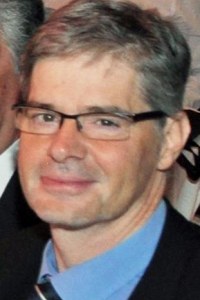
Saarela, Kaija Leena
Institute of Occupational Safety Engineering/ Tampere University of Technology/ P.O. Box 541/ FI-33101 Tampere, Finland 358 3 31152621/ kaijaleena.saarela@tut.fi
ABSTRACT
Unsafe and unhealthy working conditions cause many kinds of problems and suffering to individuals. It is important to look for new possibilities to promote safety and health at work. In Finland, recently several actions have been taken, among the most important are e.g. a new Occupational Safety and Health Act and a national accident prevention program. The experiences of the actions are considered in the present paper.
Keywords
Legislation, accident prevention program, violence
INTRODUCTION
Safety and health at work is a common interest in different countries. How to promote safety and health at work successfully? In Finland a lot of attention has been paid to this question lately. If we look at e.g. occupational accidents, in spite of some success in the past, the occupational accident rate seems to have stagnated since 1996. Over 100 000 occupational accidents are registered annually in our databases [2]. However, compared to the other Member States of the European Union, in 1999 the standardized incidence rate of accidents at work in Finland was below the average rate [3].
Violence has been identified as a new type of occupational health and safety risk in Finland and in many other countries. According to an interview survey, about 5% of Finnish workers had experienced either physical violence or a threat of violence at work or on the way to or from work during the past 12 months. Among the occupations, the risk was highest for the nursing staff in psychiatric wards, where almost half of the personnel had experiences of violence. Other occupations with higher than average risk were e.g. police officers, guards, other health care personnel, social service personnel, hotel and restaurant employees, the drivers of buses, streetcars, taxis, etc., workers in the retail trade, and teachers. Violence can result in physical and psychological damage, even death [8].
In addition to workplace personnel, intentional violent acts of people can threaten customers and other persons in the area. Among the most alarming events in Finland was a bomb explosion that occurred in a shopping centre in 2002. Seven people were killed and over 160 needed medical care. A male student who died in the blast was responsible for the explosion. It was found that he had been interested in explosives and obtained information on the topic by e.g. participating in chat groups on the
internet. Some evidence was also found of the timer, but it remained unsolved whether the explosion occurred according to plan [1].
Violence may be one factor causing stress at work, but there are a lot of other factors too. Work-related stress has become an important issue in present-day working life. About 13% of Finnish workers reported experiencing a lot of stress at the very moment the interview survey was carried out [6]. The Third European Survey on Working Conditions 2000 revealed also that continuously working at high speed was more usual in Finland than on average in the EU [5].
There are a lot of other aspects too in present-day working life which need attention. Aging of the population can e.g. cause problems in the future. The average age of the workforce is rising in Finland. By taking care of safety and health at work, it is possible to support people to stay longer in working life.
RECENT ACTIONS IN FINLAND
In Finland, a new Occupational Safety and Health Act came into force at the beginning of the year 2003. A systematic risk assessment approach is emphasized in the prevention of occupational accidents, occupational diseases and other work-related problems. Many new challenges are set for workplaces. Attention has to be paid e.g. to physical, mental and social workload, physical violence and threats, bullying, harassment and working alone. The new Act goes actually further than the Framework Directive (89/391/EEC), especially by specifying action employers should take regarding psychosocial risks [4].
The threat of violence is an example of the new challenges in the Act. According to the section 27 [4]:
“The work and working conditions in jobs entailing an evident threat of violence shall be so arranged that the threat of violence and incidents of violence are prevented as far as possible. Accordingly, appropriate safety arrangements and equipment needed for preventing or restricting violence and an opportunity to summon help shall be provided at the workplace.”
“The employer shall draw up procedural instructions for such jobs and workplaces as referred to in subsection 1. In the instructions, controlling threatening situations must be considered in advance and practices for controlling or restricting the effects of violent incidents on the employees´ safety must be presented. When necessary, the functioning of the safety arrangements and equipment must be checked.”
A national program, the objective of which is to steadily reduce the number and seriousness of occupational accidents, was started in 2001 and the program will continue until 2005 [7]. In addition, a new classification system based on the ESAW (European Statistics on Accidents at Work) methodology was adopted at the beginning of the year 2003.
EXPERIENCES FROM THE NEW ACT AND OTHER ACTIONS
The experiences from the new Occupational Safety and Health Act have been very positive by now. People have participated actively in several seminars arranged for
workplaces on the topic. The new Act seems to have given new content to safety and health and increased interest in these activities at workplaces.
Collaboration has been utilized in the national accident prevention program. Different groups representing authorities, employer and employee organizations, research and education, insurance, funds and workplaces have participated in the work. The actions taken in the program include e.g. research and development projects, production of guide material for workplaces and creating a network for workplaces interested in the application of the zero accident philosophy. In addition, an annual seminar has been arranged for workplaces and other interest groups. A guidebook has been published on the new classification system for occupational accidents.
RESEARCH PROJECTS
The Institute of Occupational Safety Engineering, Tampere University of Technology has been involved in research projects for e.g. producing information on the effectiveness of safety education in the Finnish public education system and on integrated and cooperative safety systems at company level. In a study concerning those working alone, especially possibilities to utilize wireless technology to increase safety have been sought. In another project a new type of computer-based learning environment has been developed. In the learning environment, occupational safety and health can be studied by utilizing a virtual company, which has been constructed on the basis of information gathered from real companies.
In one of our ongoing projects, a risk assessment method is being developed for shopping centres. In addition to occupational health and safety, the method covers premises security, crime prevention, rescue operations and emergency planning, environmental safety, security of operations, personnel security and information security. The risk assessment is carried out in cooperation with the different organizations operating in the shopping centre. Safety and security are very important issues in shopping centres where large groups of people gather. In addition to a bomb explosion, also a fire can be a serious risk.
A system for assessment and management of risk of violence at work has been developed in earlier studies. On the basis of the system, a so-called KAURIS method has been developed and a guidebook published especially for the retail industry [8]. The KAURIS method was utilized with good results in an intervention study conducted in the Finnish trading chain company. Altogether 12 stores participated in the study. After the study, a decision was made in the company to start to use the KAURIS method in all of their over 300 stores.
DISCUSSION
Promoting safety and health at work demands continuous efforts. In Finland, a good basis has been provided by the new Occupational Safety and Health Act and the accident prevention program. However, further actions are still needed. Last year a new five-year program “Promoting the Attractiveness of Working Life” was launched. The new program will continue e.g. the work started by the accident prevention program. An ambitious goal is e.g. to reduce the occupational accident rate by 40% by the year 2010 (compared to the year 2002).
It is also important to compare the situation in one country with that in other
countries. The uniform statistics systems and different kinds of surveys in the European Union provide information for this process. In promoting safety and health at work, different approaches and methods are needed. With e.g. a comprehensive risk assessment method it is possible to gain a complete view on problems. If necessary the work can be continued with a more detailed analysis in specific problem areas. In addition, workplaces need support in their efforts to achieve improvements in practice. According to our experiences in Finland, collaboration provides a practical means which helps to fill the gap between practitioners´ and scientists´ views.
REFERENCES
- 1. A bomb in a shopping center (Pommi Kauppakeskuksessa). Annual report of the National Bureau of Investigation (of the Finnish Police) 2002, Vantaa 2003, 18 19 (in Finnish).
- 2. Accidents at Work 2001. Labour Market 2003:18, Statistics Finland, Helsinki 2003.
- 3. European social statistics. Accidents at work and workrelated health problems. Data 19942000. European Communities, Luxembourg 2002.
- 4. Occupational Safety and Health Act, No. 738/ 2002 (unofficial translation).
Retrieved March 25, 2004 from
http://www.finlex.fi/pdf/saadkaan/E0020738.PDF
- 5. Paoli P
Papers relacionados














